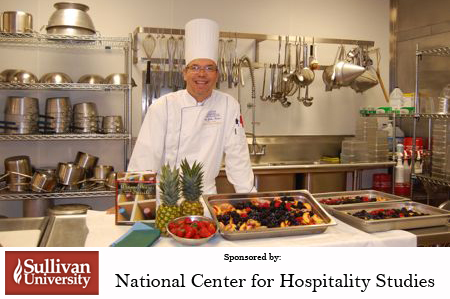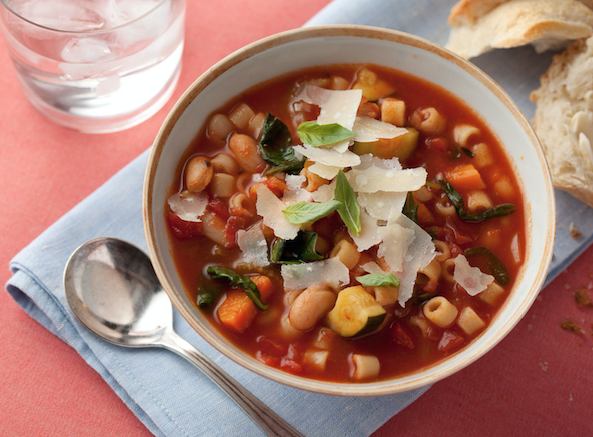When was the last time you made soup? Not something out of a can or pouch but real soup with vegetables cut by hand, simmered in stock and dished out at the dinner table with some nice crusty bread?
How about a roast in the oven, or even a tray of brownies. Considering the long slow slide from summer to fall, filled with sunny days and patio evenings there’s probably some cobwebs in the corners of your oven. Guess what? Its 42 degrees and rainy this morning and while it may not yet be official, winter will eventually come and with it a return of comfort food. Which brings me back to soups and stews, casseroles and stick to your ribs goodness.
At this point we have to address the elephant in the room: fat. As I’ve noted before, you can’t get away from it, but you can lessen it in your everyday diet and pick fats that are better for you. Fair warning, I am not the low fat kind of guy you might be looking for. My idea of a food crime is skim milk low fat mac and cheese.
What I don’t do is make a steady diet of mac and cheese knowing full well that either extreme is certainly not healthy for you. I pick my spots, and my dishes to enjoy with a little more fat as the weather cools. Where I might have used olive oil on my bread for most of the summer I might spread it with a bit of goat cheese or unsalted butter in the fall.
A minor change of fat and the frequency of use has to balanced elsewhere with broth soups that have lots of body (minestrone, caldo verde), pastas that temper heavy cream sauces with a bit of tomato or smoked peppers, and salads that shed their leaf greens and focus on roasted vegetables, spinach and baby kale.
Where and when you parcel out your fat is important to your diet and health, but there are ample ways and recipes that allow you to produce food with richness and depth, at once satisfying and still healthy.
Minestrone Soup
Among the various fall and winter soups that are at once common (Campbell’s) and exotic is minestrone soup. Finding its origin in the northern part of Italy, and then spreading into American households quickly this soup can be many different things to many different people.
For those who garden heavily and then can and preserve this soup can evoke specific days when the tomatoes were harvested and put up, when the beans were shucked and frozen or when the garlic was planted over a year ago. Many times imitated but always better from scratch this soup is labor intensive but multi-dimensional enough to make it worth your time.
The only fat I put in my minestrone is a touch of olive oil to start the process and a sliver of grated Parmesan or Romano to finish it. I also might have a bit of bread with butter to accompany my bowl.
1 medium carrot, peeled and small diced
1 rib of celery small diced
4 large cloves of garlic minced
1 large yellow or white onion small diced
1 bay leaf
4 medium sprigs of oregano
4 medium sprigs of thyme
Rosemary to taste (optional)
1 Tbl. chopped Italian parsley
1 cup of vegetable stock4 cups of whole tomatoes peeled and chopped with their juice. These can be canned or frozen but it’s important to crush them up into pieces no larger than might fit on a spoon. You will use the tomatoes and all the juice
Tomato paste is optional if needed to thicken the soup but usually the process of cooking will yield a wonderful “gravy” consistency and that starts with the choice and handling of the tomatoes.
1 potato, diced small
1 cup cooked elbow macaroni
1 cup cooked cannellini beans, if cooking from scratch reserve some of the cooking liquid and use that to moisten the soup or replace the vegetable stock.Cut green beans, spinach, kale, Brussel sprouts, broccoli, and cauliflower are all additions that add color, texture and nutrition to the soup. They are added at different times to preserve their color and texture. Use them sparingly and blanch them first to avoid the green vegetables especially from turning brown.
The subject of meat will come up and it is a choice you might make differently each time. A bit of pancetta diced and browned adds another savory dimension but the soup is such a marvelous balance to begin with that it can go without. Mushrooms will also be of interest and with those it’s wise to sauté them first before adding them.
In a stainless or ceramic soup pot (if you don’t have one, use what you have and after cooking transfer it to another pot to cool) add some olive oil to cover the bottom of the pot. Add your carrot, celery, onion, garlic, bay leaf and both herbs wrapped in twine. Keep the heat at a low medium so the ingredients do not color and sweat them for at least 15 minutes. This is a sofrito, a flavor base for the rest of the soup. The better you build this the better the soup will be. Add the tomato product, the vegetable stock and if needed some of the bean juice.
Once the tomato product is simmering it becomes a matter of finishing the soup with the cooked ingredients. Because the potatoes are diced small but are uncooked they will go in next. You base the rest of your ingredients on the cooked integrity of the potatoes and when they start to soften you are close to done. Add in the macaroni, the beans and the blanched vegetables. Cook the soup until the color and consistency have deepened to a rust tomato color and the flavors have blended well.
Season and then cool the soup. Doing this soup a day ahead will enhance the flavors but be careful of the reheat as the cooked product added late to the soup will be ready to go. Serve warm with shaved Parmesan and crusty bread and enjoy a guilt free creation with hints of a season now past with the promise yet to come.
John Foster is an executive chef who heads the culinary program at Sullivan University’s Lexington campus. A New York native, Foster has been active in the Lexington culinary scene and a promoter of local and seasonal foods for more than 20 years. The French Culinary Institute-trained chef has been the executive chef of his former restaurant, Harvest, and now his Chevy Chase eatery, The Sage Rabbit, in Lexington.
To read more from Chef John Foster, including his recipes, click here.



























